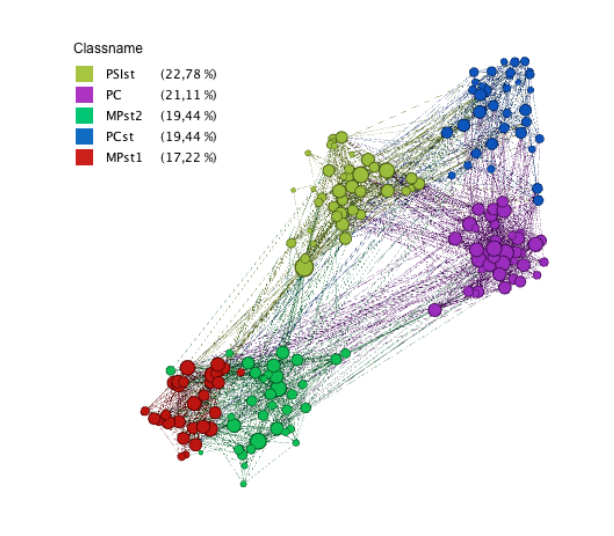Human Contact Patterns in High Schools Hint at Epidemic Containment Strategies
Epidemiologists have a particular interest in understanding human contact patterns. This kind of data can be hugely valuable in modeling and predicting the way infectious diseases spread. In turn, that helps to evaluate different kinds of containment strategies to prevent further spread.

Researchers have long known that one of the primary mixing pots for infectious diseases are schools where children meet in a high-density environment and then carry whatever germs they pick up back to their household.
So an interesting question is exactly what kind of human contact pattern occurs in schools. Today, we get an answer thanks to the work of Julie Fournet at the University of Toulon in France and Alain Barrat at the Institute for Scientific Interchange Foundation in Turin, Italy. These guys have measured the pattern of contacts between high schoolchildren and how it varies over a period of a year. And they say their results provide evidence in favor of novel containment strategies for disease.
Fournet and Barrat asked 118 high school students aged 18 or over to carry electronic ID badges that could sense and record the presence of other badges within a distance of a meter or so. They monitored them during four days (Tuesday to Friday) in December 2011. The following year, they repeated the same experiment with 180 students of the same age at the same school over the course of seven days (one full school week plus the Monday and Tuesday of the following week).
This seven day period alone produced almost 20,000 contact events with a combined duration of 250 hours. The average length of a contact was 44 seconds and almost 90 percent of the contacts lasted less than a minute. However, just over 1 percent of the contacts lasted more than five minutes. In other words, the contact times follow a typical power law distribution.
Fournet and Barrat also plot out the network of links between pupils. This network is formed from students as nodes and the contacts between them as edges. This reveals some interesting patterns. Perhaps unsurprisingly, girls seem to prefer contacts with other girls and boys seem to prefer contacts with other boys (at least in the schoolroom setting).
A more interesting observation is the nature of relations between students who are not in the same class. “Very few contacts are observed between students of different classes,” say Fournet and Barrat. And where there are contacts between students in different classes, they tend to be studying similar topics.
Perhaps most interesting of all is that the pattern of contacts changes little from one year to another. “We show the high stability of the contact patterns across days and across years: the statistical distributions of numbers and durations of contacts are the same in different periods,” say Fournet and Barrat.
What’s more, the rate of change of the contacts from day-to-day among individuals is similar year in and year out.
That’s an interesting insight into the nature of face-to-face social networks in high schools, and agrees in general with other similar studies of human contact patterns in places such as museums, hospitals, and even a primary school. It provides yet more data towards the goal of building an “atlas” of human contacts.
It also provides evidence in favor of certain containment strategies. Fournet and Barrat say the fact that most contacts occur within classes is significant. “The closure of single classes or groups of classes when a disease outbreak is detected could represent viable alternatives to full school closures,” they conclude.
That could turn out to be handy when the next epidemic strikes.
Ref: arxiv.org/abs/1409.5318 : Contact Patterns Among High School Students
Keep Reading
Most Popular
Large language models can do jaw-dropping things. But nobody knows exactly why.
And that's a problem. Figuring it out is one of the biggest scientific puzzles of our time and a crucial step towards controlling more powerful future models.
How scientists traced a mysterious covid case back to six toilets
When wastewater surveillance turns into a hunt for a single infected individual, the ethics get tricky.
The problem with plug-in hybrids? Their drivers.
Plug-in hybrids are often sold as a transition to EVs, but new data from Europe shows we’re still underestimating the emissions they produce.
Google DeepMind’s new generative model makes Super Mario–like games from scratch
Genie learns how to control games by watching hours and hours of video. It could help train next-gen robots too.
Stay connected
Get the latest updates from
MIT Technology Review
Discover special offers, top stories, upcoming events, and more.